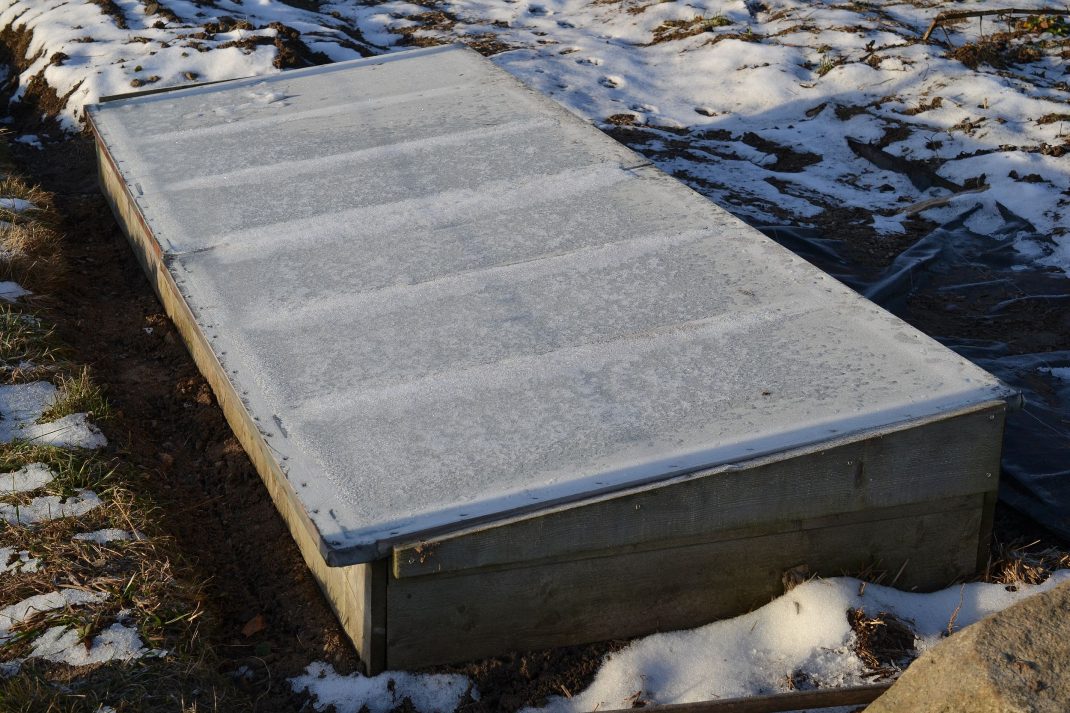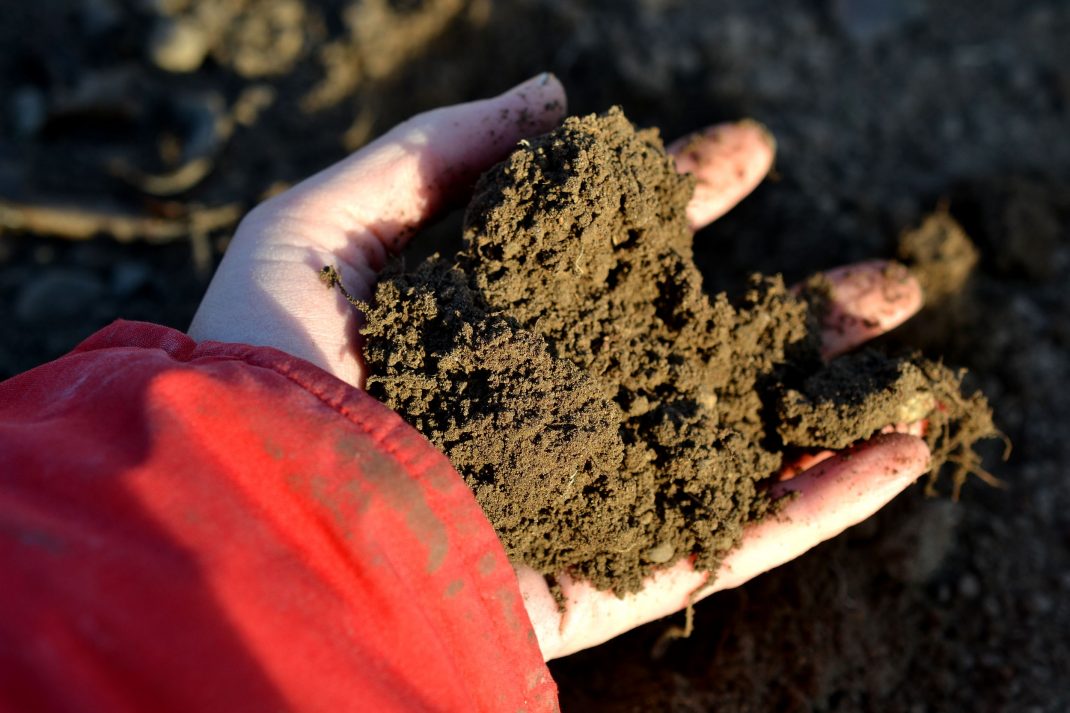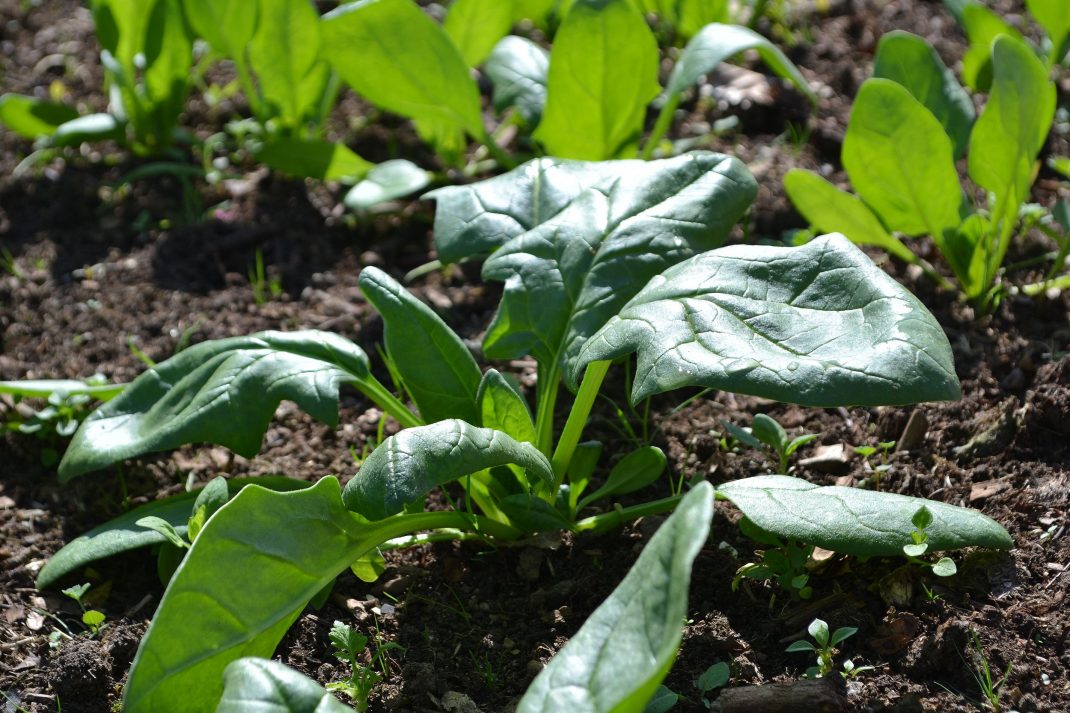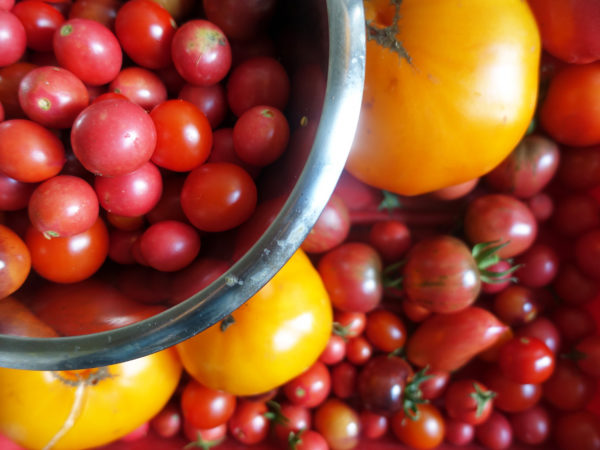Winter-sowing in a cold frame
I generally do two types of sowing in winter: First of all the vegetables I sow and leave to grow in the same spot. And then of course the vegetables I pre-sow and move somewhere else. Today, I'm winter-sowing in a cold frame outside.

This is what my cold frame looked like in November.
I keep building new beds and I really need to get better at organizing and planning my garden. Growing on a larger scale has turned out to be a bigger challenge than taking care of a smaller garden. And there is, after all, no point in growing a lot of vegetables if we can't eat them all.
I want to sow as much as I can now, as preparation for spring. My ideal is of course that all of my cultivation boxes and cold frames are completely ready already in winter. If I succeed, I have plenty of time to harvest my beds outside when I need to. That's why I do winter-sowing.
My cold frame
A few years ago, I built a frame for my hotbed. I don't really need this frame anymore since I plan on putting the next hotbed right in the polytunnel. This frame is currently sitting in a beautiful south-facing spot outside, on top of really high-quality soil where I used to grow raspberries. I'm going to save this spot for vegetables that I can start harvesting already before midsummer or so. I need to remove the last raspberry roots first though.

The sun is really low but it reaches my cold frame after all. The cold frame warms up nicely in spring, so try to put it in a sunny spot.

It's been a little colder these past days, but the soil is still nice and airy outside of the frame. No freezing here! A little protection against the elements goes a long way.
Winter-sowing in a cold frame works really well for a number of vegetables. I do two sowings. First of all, I sow a batch of vegetables that stay where they are from sowing to harvest. Secondly, I pre-sow another batch and then move it to another spot. If you don't know what a cold frame is, you can read more about it here:
Garden DIY: Building a cold frame lid
What to winter-sow?
You can grow plenty of vegetables in winter too. I sow for example lettuce, dill, parsley, parsnip, spinach, salsify, parsley root, lamb's lettuce and some cabbages in winter. As you can see, most of these vegetables are supposed to stay and grow in the beds for a long time. For example the parsnip and the parsley root. I'm not going to use them in this bed though. Some other fast-growing leafy greens are also a no.
I decided to fill the entire bed with spinach, simply because we love it so much and it's easy to store in the freezer. Just remember that babies under the age of 1 are not supposed to eat spinach or any other leafy greens that contain nitrite. This substance is harmful to young children. In that case, you can choose to sow New Zealand spinach in the summer instead. New Zealand spinach is less likely to develop nitrite than regular spinach.

I was able to start harvesting last year's winter-sowing of spinach in April, even despite the cold winter and late spring.
More about spinach: Late sowing of spinach and lettuce
I'm looking forward to harvesting my lovely spinach, growing in my cold frame with a lid on top. We use the spinach for salads and I also use it my cooking several days a week. For example in pasta sauces, omelets, gratins, and stews. Delicious! And my kids love spinach too. I usually harvest it all in May (or at the latest, the start of June) before the plants bolt. After that, I simply remove the frame and remake the bed so that I can plant something new. For example corn.
I hope this post inspired you to try winter-sowing in a cold frame too!
/Sara Bäckmo



Leave a Reply
You must be logged in to post a comment.